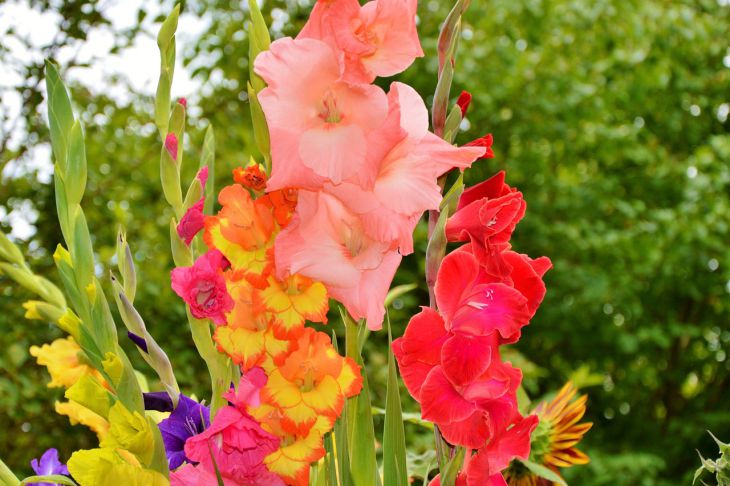How to Grow Gladioli: Basic Gardening Tricks
Gladioli are popular among gardeners due to their beautiful and bright flowering.
These plants are relatively easy to grow and can add a splash of color to any garden.
Together with the expert of the portal "MOS SMI", scientist agronomist and landscape designer Anastasia Kovrizhnykh we will discuss the steps necessary for the successful cultivation of gladioli.
Choosing a landing site
Gladioli grow in full sun, so it is important to choose a location that receives at least six hours of direct sunlight each day.
The soil should be well-drained, fertile and free of weeds. If the soil is heavy, clayey or sandy, you can improve it by adding organic matter such as compost or peat moss.

Avoid planting gladioli in areas prone to flooding, as this may cause the corms to rot.
Planting corms
Gladioli are usually planted in the spring, as soon as the soil warms up. The corms should be planted at a depth of about 10-15 centimeters, with the pointed end up.
The distance between the corms should be about 15 centimeters so that they have enough room to grow.
If you plant several rows, leave a distance of at least 50-60 centimeters between them.
Watering
After planting, water the gladioli thoroughly to help settle the soil and encourage the corms to root.
Throughout the growing season, plants should continue to be watered regularly, trying to keep the soil moderately moist.
As your plants grow, you may need to increase the frequency of watering to prevent the soil from drying out.
Fertilizer
To ensure healthy growth and vibrant blooms, gladioli benefit from regular fertilizing. You can fertilize them with a balanced all-purpose fertilizer every 2-3 weeks.
Alternatively, use a slow-release fertilizer early in the growing season. Be sure to follow the manufacturer's instructions for recommended amounts and frequency of application.
Support
As gladioli grow, they can become heavy and need support to keep them from falling over.
You can tie up the plants using bamboo canes or other suitable support stakes.
Place stakes in the ground when the plants are about 25 centimeters tall, and carefully tie the stems to the stakes as they grow.
Head trimming
To stimulate plants to bloom more actively, it is necessary to regularly tie up wilted flowers.
To do this, you need to remove the entire flower stalk after the flowers have faded. Leaving the faded flowers on the plant will direct the plant's energy toward seed production rather than flowering.
Digging up rhizomes
In areas with cold winters, dig up the tubers in the fall after the foliage has frozen. Carefully lift the tubers out of the ground and remove any excess soil.
Let them dry out for a few days in a warm, dry place, then remove any remaining foliage and store in a cool, dry place until it's time to plant them again in the spring.
In conclusion, gladioli are a wonderful addition to any garden and are relatively easy to grow.
With a little care and attention, you can enjoy their stunning blooms year after year.
Remember to choose a suitable planting site, water and fertilize the plants regularly, tie them up as needed, trim faded flowers, and dig up the corms in the fall for storage. Happy gardening!
Earlier we wrote about which green manure crops need to be sown in a greenhouse in the spring.
